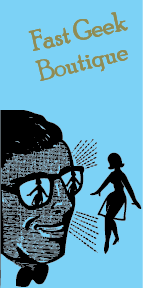Frank Kwiatkowski is a type one diabetic. For thirty years he has been shooting insulin, and the constant grind of the routine feels like an inescapable internment camp. It’s as if there is a price attached to his life: the price of a bottle of insulin. “Actions determine what people are. I’ve been injecting insulin for over thirty years. In that regard I come from bottles of insulin.”
But…that is bullshit. He continues the ritual of insulin injections to live, but he lives to make art. Frank does art, and has done so since he was a child. Thus, by his own logic, Frank is art. He enriches his art and perpetuates the artistic experience beyond his mortality by instructing others in the unique art of the conecut. He considers these artists his “disciples.”
Frank’s roots grew strong in a hardworking Denver blue collar family. His father drove a fork lift and his mother cleaned houses. Frank had three sisters and shared a room with his brother, but was often alone. Kwiatkowski started creating art as a child though it was somewhat forbidden in his house hold, he did his art on the walls of his house, something that always got him into trouble. An appropriate beginning since now his work can be found on walls throughout Denver, light post and other places that according to the state shouldn’t be there.
Most of Frank’s work life has been custodial work, but this work has never been the focus of his life. Frank would bring his cone cuts to work so that he could make his art “on the man’s time.” He spent a lot of time looking over his shoulder, but his art kept him going. He would come home from work tired, but would wake up around 3am and feel refreshed and inspired to work on his newest creation.
The process of making a conecut starts with the traffic cone. The cone is cut open from the tip to the base and severed from the base. The cone is cut into portions (usually thirds). From there Frank uses an erasable pen to draw up a design, then a linocut tool to carve out the design he drew out. The process varies from piece to piece--the more detailed the piece, the longer it takes. On average, most pieces take thirty hours. Once the template is carved, it is proofed; which entails laying ink out on a sheet of plexi-glass and using a rubber roller to transfer the ink to the template. The template sets on the floor face up. Once the plate is inked a sheet of paper is placed over it. Frank uses a roll of industrial paper as a press (it weighs around forty pounds). After the press is lowered over the paper and template, he uses a baron, ( a hand held printmaker tool used to press over the print and template or to pinpoint pressure in areas as needed) to press over the small details. When the ink has registered, the press is lifted up and the paper is peeled off and hung up to dry. The last step is to rinse and clean off the template, roller and plexiglass and let them dry.
The messages found in his conecut’s are taken from symbols that are encountered in everyday life: money, vehicles, medicine, etc. These symbols are juxtaposed against images of people brandishing knives and needles; in Kwiatkowski press’ words, a conecuts’ “matter was taken from society, mutilated, transformed and returned in retribution!”
Kwiatkowski utilizes the dichotomy of opposing forces found in life to fuel his art, much like the Taoist wizards of old. Life and death, body and mind, light and dark, enslaved and freed, rich and poor: they are all framed together in stark but balanced contrast with one another. “There’s a religious quality to my work. The cone has become my object of worship--a syringe and vial of insulin as well.
Whether you’re walking down the street or dinning at your favorite mom and pop place, look out for the story of Kwiatkowski. It is told in the images of cones around you and in the opposing forces that work against each other every day to provide the experiences which shape our lives.
“Great art has a profound story behind it. I have a story that ive been carrying around for over fourteen years, I am using my artwork as my own graphic novel that’s s been wheat pasted on the walls of Denver streets.”
|
|




























